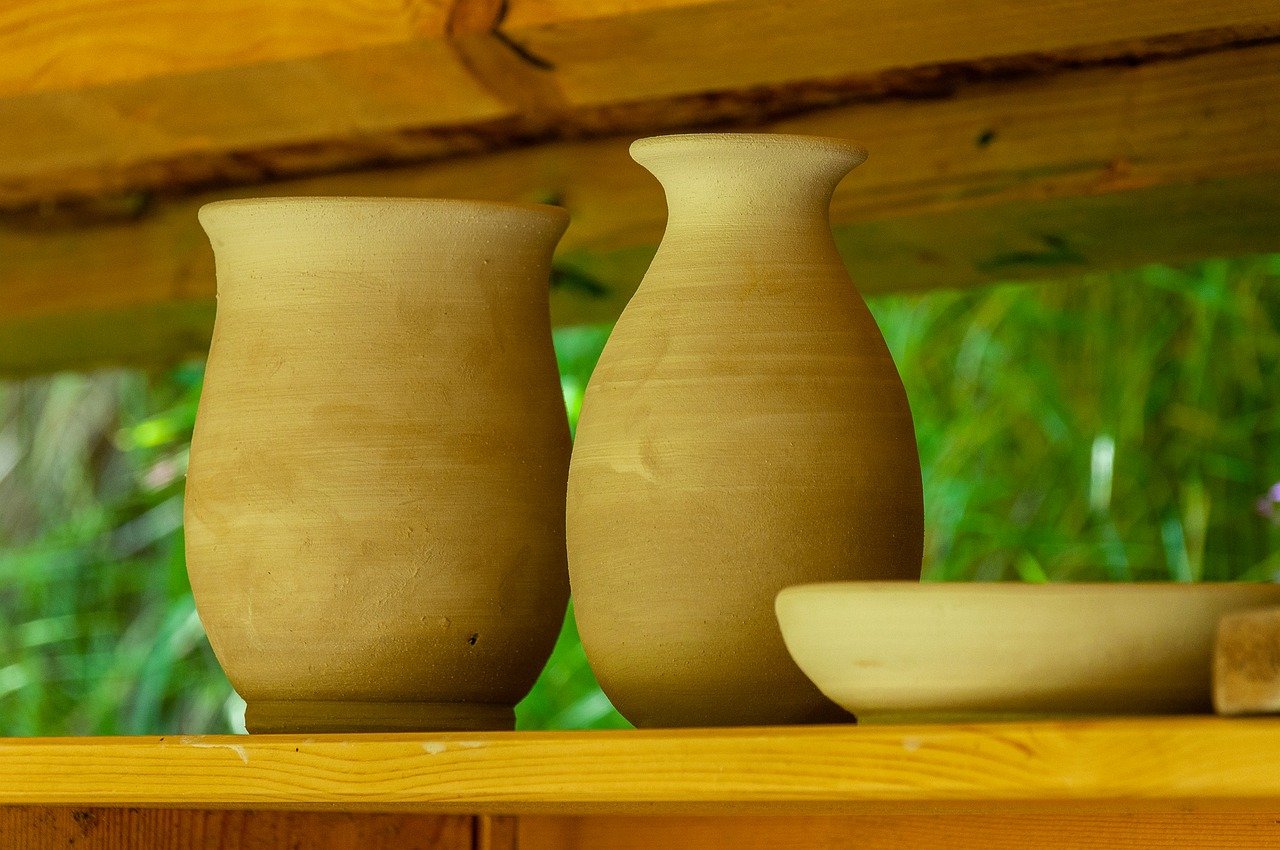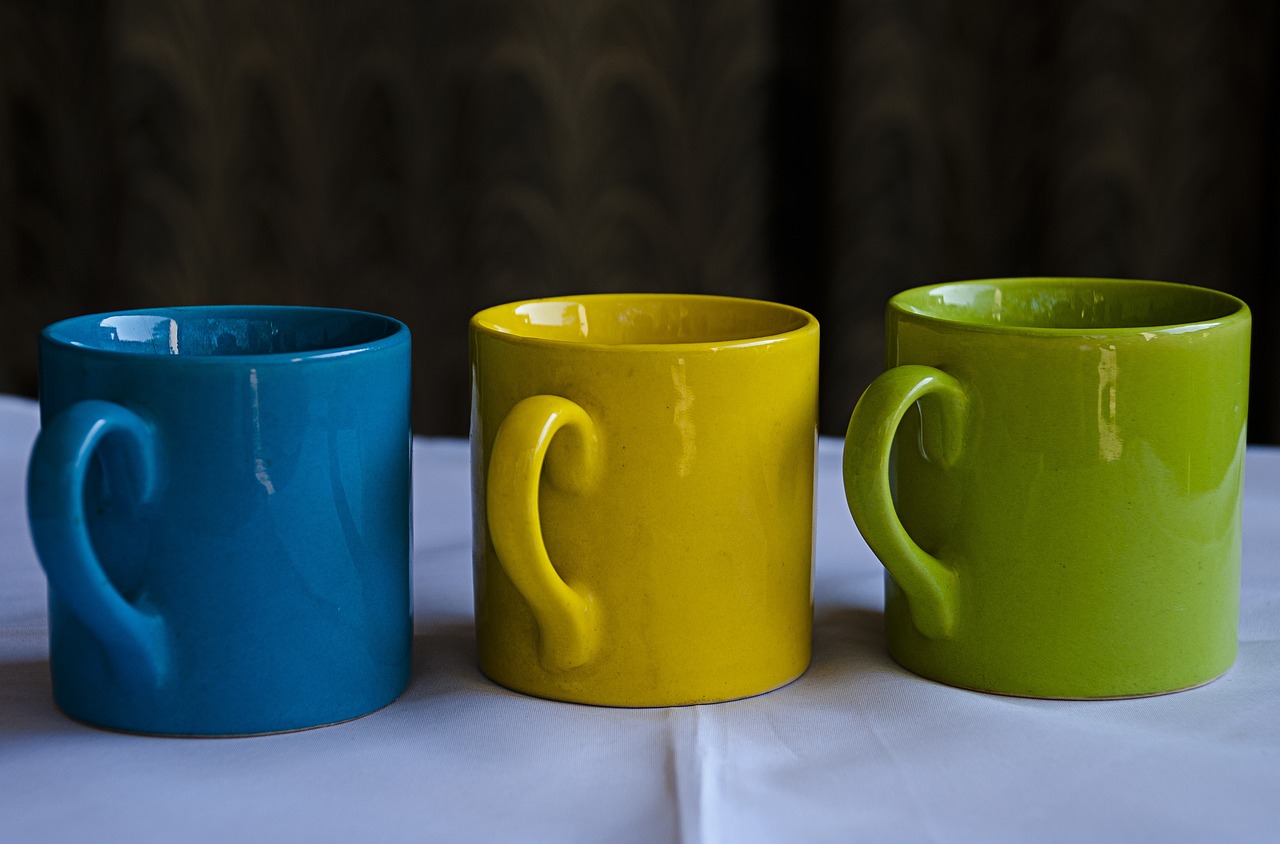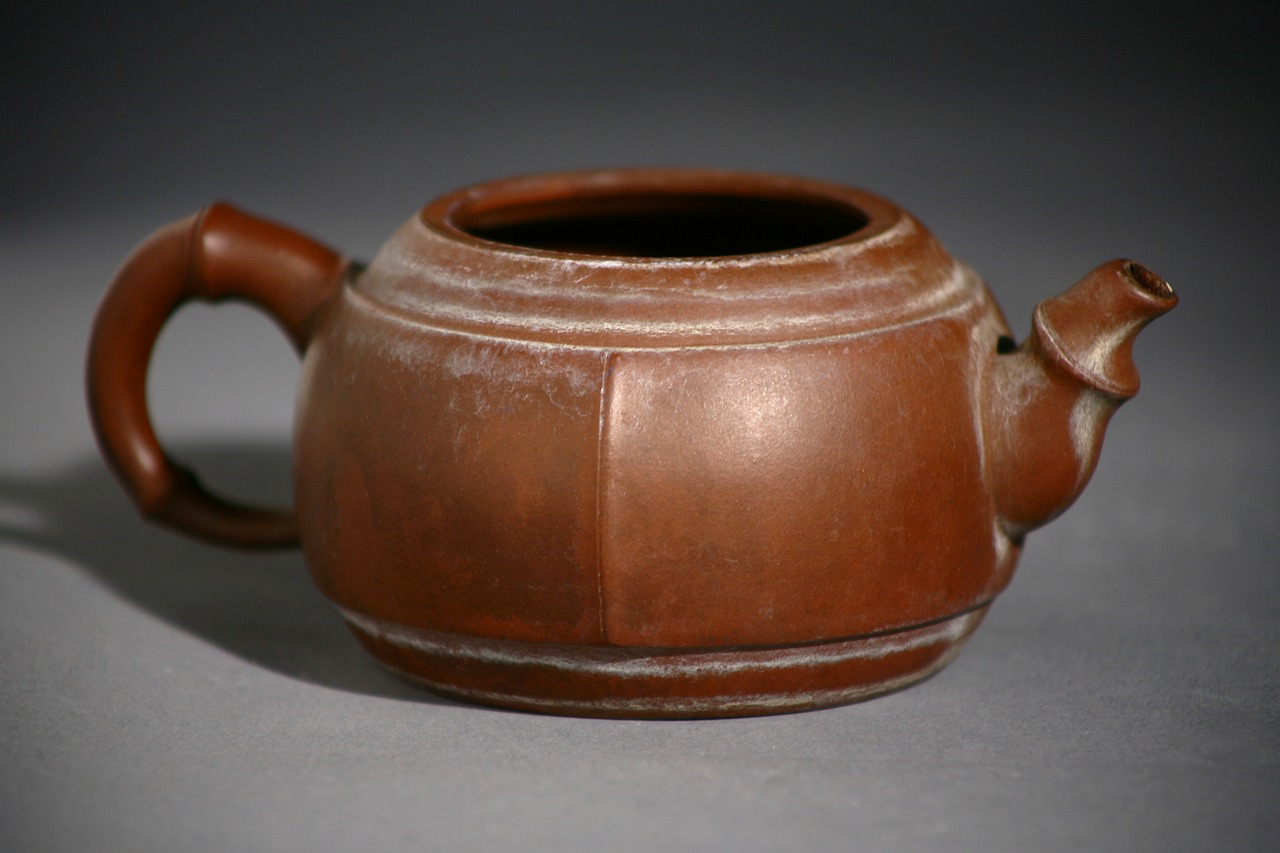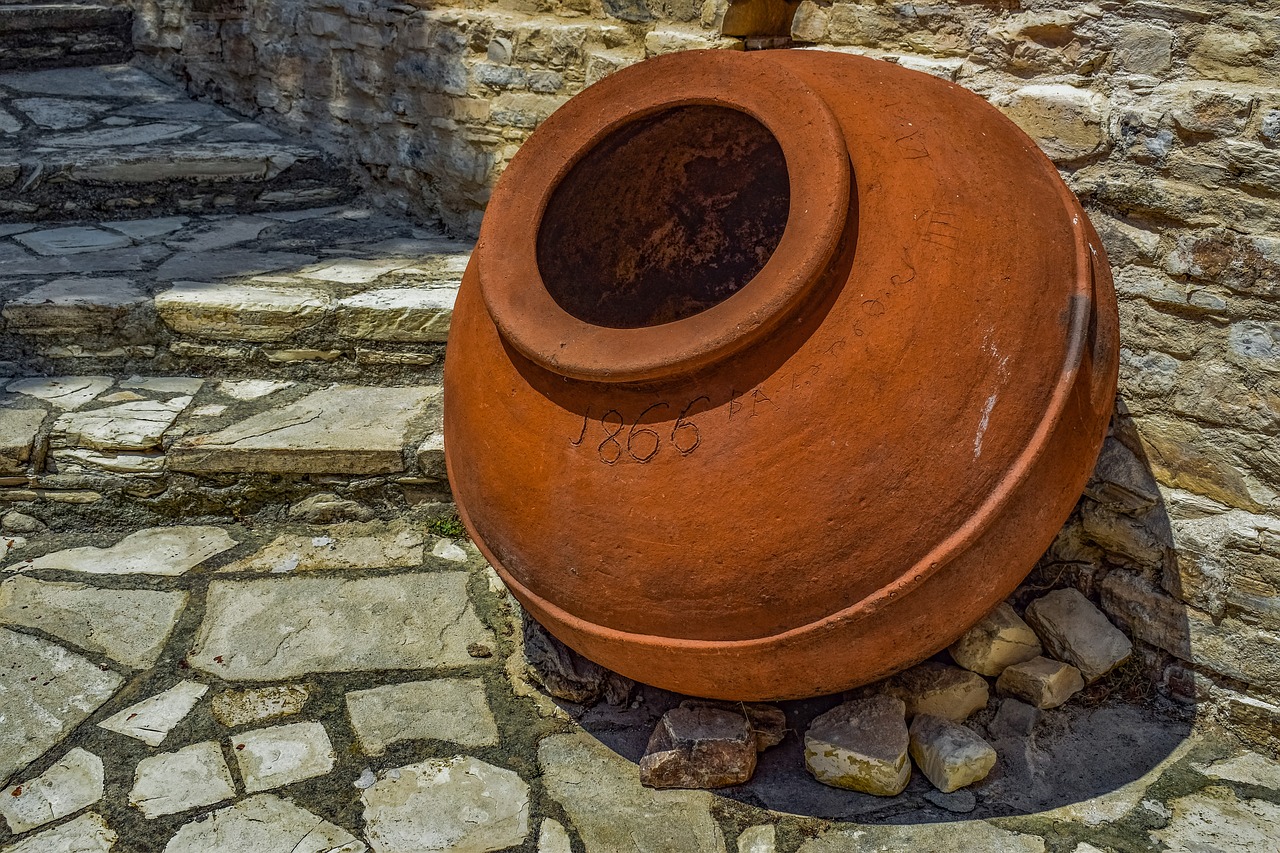What Ceramic Pottery Tells Us About Ancient Cultures
Ceramic pottery is more than just a collection of clay vessels; it is a window into the past, offering us profound insights into the lives of ancient cultures. Imagine holding a piece of pottery that was once cradled in the hands of someone thousands of years ago. What stories does it tell? What dreams, aspirations, and daily struggles are embedded in its very fabric? Each shard and fragment serves as a testament to the ingenuity and creativity of our ancestors, revealing their daily routines, beliefs, and artistic expressions.
Throughout history, pottery has been an essential part of human civilization. It has evolved from simple, utilitarian forms to elaborate works of art, reflecting the technological advancements and cultural shifts of various societies. The beauty of ceramic pottery lies not only in its functionality—used for cooking, storage, and ritualistic purposes—but also in its ability to convey the cultural identity of the people who created it. By examining these artifacts, we can uncover the intricate tapestry of human experience, from the mundane to the extraordinary.
As we delve deeper into the significance of ceramic pottery, we discover that it is a rich source of information about trade routes, social hierarchies, and even religious practices. For instance, the presence of certain materials or decorative styles in pottery can indicate trade relationships between different cultures. This interconnectedness is a reminder that ancient societies were not isolated; they were part of a larger network of human interaction. The pottery serves as a physical manifestation of these connections, bridging the gaps between different peoples and their histories.
Moreover, the decorative styles and motifs found on pottery often carry profound symbolic meanings. Patterns may represent spiritual beliefs, social status, or even historical events. For example, a particular design could signify a connection to the divine or reflect the cultural values of a society. Thus, studying these decorative elements allows us to gain a deeper understanding of the values and priorities of ancient cultures.
In summary, ceramic pottery is not merely an archaeological artifact; it is a narrative, a cultural artifact that speaks volumes about the lives of those who came before us. By examining these beautiful creations, we can piece together the stories of ancient civilizations, enriching our understanding of human history and the diverse tapestry of cultures that have shaped our world.
- What is ceramic pottery? Ceramic pottery refers to objects made from clay that have been shaped and then fired at high temperatures to create durable vessels.
- Why is pottery important in archaeology? Pottery provides valuable insights into the daily lives, trade practices, and cultural beliefs of ancient peoples.
- How can pottery reveal information about ancient cultures? The materials, techniques, and decorative styles used in pottery can indicate cultural practices, social structures, and interactions between different societies.
- What are some common pottery techniques? Common techniques include hand-building, wheel-throwing, pit firing, and kiln firing, each offering unique characteristics to the finished product.

Historical Significance of Ceramic Pottery
This article explores the significance of ceramic pottery in understanding ancient cultures, revealing insights into their daily lives, beliefs, and artistic expressions through various historical contexts and archaeological findings.
Ceramic pottery is not just a collection of clay vessels; it is a window into the past. For thousands of years, it has served as a crucial element in human history, playing various roles in storage, cooking, and artistic expression. Imagine walking through an ancient village, where the air is filled with the scent of cooking food, and the walls are adorned with colorful pottery. Each piece tells a story, reflecting the technological advancements and cultural practices of its time. In essence, pottery is a tangible representation of the evolution of human civilization.
From the earliest days of humanity, pottery has been an essential medium. It allowed our ancestors to store grains, liquids, and other essential items, which was a game-changer for survival. Before the advent of pottery, food preservation was a challenge, but with the introduction of ceramic vessels, ancient people could keep their food safe from pests and spoilage. This advancement significantly impacted their daily lives and contributed to the growth of communities.
As societies progressed, so did their pottery techniques. The evolution in pottery-making methods illustrates the technological advancements that different cultures experienced. For instance, the transition from hand-built pottery to wheel-thrown ceramics marked a significant leap in efficiency and creativity. This shift not only enhanced the quality of the pottery but also allowed for more intricate designs, showcasing the artistic flair of ancient artisans.
Moreover, pottery served as a canvas for artistic expression. The decorative styles and motifs found on ancient ceramics often reflect the beliefs and values of a culture. For example, many ancient civilizations used pottery to depict their deities, important events, or daily life scenes. This artistic expression not only beautified their homes but also reinforced cultural identity and social cohesion. The colors, patterns, and shapes used in pottery can reveal a lot about the people who created them, offering insights into their spirituality, social structures, and even their trade networks.
In conclusion, the historical significance of ceramic pottery is immense. It serves as a vital resource for archaeologists and historians, providing clues about ancient lifestyles, technologies, and beliefs. Each shard of pottery unearthed tells a story, allowing us to piece together the intricate puzzle of human history. As we continue to study these artifacts, we gain a deeper appreciation for the ingenuity and creativity of ancient cultures, reminding us that even the simplest objects can hold profound meaning.
- What is ceramic pottery made from? Ceramic pottery is primarily made from clay, which is shaped and then fired at high temperatures to create durable objects.
- How can pottery help us understand ancient cultures? Pottery provides insights into daily life, artistic expression, and technological advancements of ancient civilizations.
- What are some common techniques used in pottery making? Common techniques include hand-building, wheel-throwing, and various firing methods like pit firing and kiln firing.
- Why is pottery considered an important archaeological find? Pottery can reveal information about trade, social structures, and cultural practices of ancient societies.

Techniques and Materials Used
Ceramic pottery is not just about clay and fire; it’s a fascinating blend of technique, creativity, and cultural identity. Each piece of pottery tells a story, reflecting the unique practices and available resources of its makers. From the choice of clay to the firing methods, every aspect of pottery-making reveals a wealth of information about ancient cultures. The materials used often depended on the local environment, showcasing the artisans' ability to adapt and innovate. For example, in regions rich in certain minerals, potters could create vibrant glazes that added color and depth to their work.
The primary material for pottery, of course, is clay. However, not all clays are created equal. There are several types, each with distinct properties:
- Earthenware: This is the most common type of clay, often used for everyday items. It is porous and fired at lower temperatures.
- Stoneware: Known for its durability, stoneware is fired at higher temperatures, making it less porous and more suitable for functional ware.
- Porcelain: This fine clay is fired at very high temperatures, resulting in a translucent and delicate finish. It was often used for more artistic pieces.
In addition to the type of clay, the techniques employed in pottery-making are equally diverse. Ancient artisans utilized various methods to shape and decorate their wares. Some of the most notable techniques include:
- Hand-building: This technique involves shaping the clay by hand, using methods such as coiling or pinching to create forms.
- Wheel-throwing: The potter's wheel revolutionized pottery-making, allowing for more uniform and symmetrical shapes.
- Slip casting: This method involves pouring liquid clay (slip) into molds to create intricate designs and shapes.
Moreover, the firing techniques used in pottery production have evolved tremendously over time. These methods not only impact the durability of the pottery but also its aesthetic qualities. Understanding these firing techniques provides insight into the technological advancements of ancient civilizations.
Firing pottery is akin to sending it through a transformative journey, where raw clay becomes a hardened artifact. The two primary firing methods are:
- Pit Firing: This is one of the oldest methods and involves placing pottery in a pit filled with combustible materials. The fire's intensity and the materials used can create unique surface effects, but the process is unpredictable.
- Kiln Firing: This modern technique allows for greater control over temperature and atmosphere, resulting in more consistent and durable pottery. Kilns can reach high temperatures, enabling the use of glazes that enhance the pottery's appearance.
Each of these techniques contributes to the pottery's final look and feel, revealing not just the skill of the potter but also the cultural significance behind every piece. For instance, the intricate designs seen in some cultures often carry deep meanings, symbolizing spiritual beliefs or social status. The choice of colors and patterns can reflect the community's values, making each piece a vital link to its cultural heritage.
In conclusion, the techniques and materials used in ceramic pottery provide a window into the past, showcasing the ingenuity and creativity of ancient artisans. By studying these elements, we gain valuable insights into the daily lives, beliefs, and artistic expressions of ancient cultures, reminding us that pottery is more than just functional ware; it is a canvas of history.
Q1: What is the oldest known pottery?
A1: The oldest known pottery dates back to around 20,000 years ago, discovered in China. It is believed to have been used for cooking and storage.
Q2: How do firing techniques affect pottery?
A2: Firing techniques impact the durability, color, and texture of pottery. Different methods can yield unique surface finishes and structural integrity.
Q3: What role does pottery play in understanding ancient cultures?
A3: Pottery serves as a crucial artifact for archaeologists, offering insights into the daily lives, beliefs, and social structures of ancient societies.

Firing Techniques
When we think about ceramic pottery, one of the most fascinating aspects is the used to transform raw clay into durable, functional art. These techniques not only influence the physical properties of the pottery but also reflect the cultural and technological advancements of the societies that created them. Over the centuries, various firing methods have been developed, each with its unique characteristics and significance.
Two primary firing techniques stand out in the history of pottery making: pit firing and kiln firing. Both methods have their roots in ancient practices, yet they offer distinct benefits and challenges. Understanding these techniques allows us to appreciate the artistry and ingenuity of ancient potters.
Traditional pit firing is one of the oldest and most basic methods of firing pottery. In this technique, potters would dig a pit in the ground, fill it with combustible materials like wood, and place the pottery on top. Once the pit was packed with clay items and fuel, the potter would ignite the fire, allowing it to burn for several hours. This method creates unique effects on the pottery, such as color variations and surface textures, due to the smoke and ash interacting with the clay.
What’s particularly interesting about pit firing is how it reflects the cultural practices surrounding pottery production. It’s not just about creating functional items; it’s a communal activity that often involves rituals and traditions passed down through generations. The resulting pottery often features earthy tones and organic patterns, showcasing the potter's connection to nature and their environment.
On the other hand, modern kiln innovations have revolutionized the pottery-making process. Unlike pit firing, which relies heavily on natural materials and environmental conditions, kilns provide a controlled environment that allows potters to achieve higher temperatures and more consistent results. With advancements in technology, kilns can now reach temperatures of over 2400°F (1300°C), enabling potters to experiment with different clay bodies and glazes. This has opened up a whole new world of artistic possibilities.
For example, electric kilns, which are widely used today, offer precise temperature control and can fire a wide variety of ceramics, from porcelain to stoneware. The ability to regulate the atmosphere inside the kiln—whether oxidizing or reducing—also affects the final appearance of the pottery. This means that potters can now create vibrant colors and intricate glazes that were previously unattainable with traditional methods.
In summary, the evolution of firing techniques from traditional pit firing to modern kiln innovations showcases the remarkable journey of ceramic pottery through time. Each method carries its own story, reflecting not only the technological advancements but also the cultural significance of pottery in ancient societies. Whether it’s the earthy charm of pit-fired pieces or the vibrant hues of kiln-fired ceramics, these techniques continue to inspire and connect us with our ancient past.
- What is the difference between pit firing and kiln firing? Pit firing is an ancient technique that uses a simple pit and combustible materials, while kiln firing utilizes a controlled environment to reach higher temperatures and achieve consistent results.
- How does firing affect the appearance of pottery? Firing influences the color, texture, and durability of pottery. Different techniques can produce unique effects, such as smoke patterns from pit firing or vibrant glazes from kiln firing.
- Are there any safety concerns with firing pottery? Yes, both methods require careful handling of materials and proper ventilation. It's essential to follow safety guidelines to avoid accidents and ensure a safe working environment.

Traditional Pit Firing
Traditional pit firing is a fascinating and ancient technique that dates back thousands of years, showcasing the resourcefulness of early potters. This method involves creating a pit in the ground where pottery pieces are placed along with combustible materials such as wood, leaves, and other organic matter. Once everything is set, the fire is lit, and the pottery undergoes a transformation that not only alters its physical properties but also imbues it with unique characteristics.
One of the most striking aspects of traditional pit firing is the unpredictability of the results. Unlike modern kilns, where temperatures and conditions can be meticulously controlled, pit firing relies heavily on natural elements. This can lead to a variety of outcomes, including different colorations, textures, and even surface effects. The smoke from the burning materials can leave behind beautiful, smoky patterns on the pottery, making each piece truly one-of-a-kind.
Moreover, the process of pit firing is steeped in cultural significance. For many ancient cultures, pottery was not merely functional; it was intertwined with their spiritual beliefs and community practices. The act of creating pottery could be seen as a ritual in itself, where artisans would invoke their ancestors or deities during the firing process. This connection to tradition adds a layer of meaning to the finished product, turning everyday items into vessels of cultural heritage.
To understand the impact of traditional pit firing, we can consider the following aspects:
- Materials Used: The choice of combustible materials can vary significantly, influencing the color and finish of the pottery.
- Community Involvement: Often, the firing process is a communal event, bringing people together and reinforcing social bonds.
- Environmental Factors: The surrounding environment, including soil type and available resources, plays a crucial role in the pottery's characteristics.
In essence, traditional pit firing is not just a method of pottery creation; it is a window into the past, revealing how ancient cultures interacted with their environment and each other. Each piece of pottery tells a story, a narrative that transcends time and connects us to the lives of those who came before us. By studying these artifacts, we gain invaluable insights into their daily lives, artistic expressions, and spiritual beliefs.
Q: What is pit firing?
A: Pit firing is an ancient pottery-making technique that involves placing pottery in a pit with combustible materials and igniting a fire to create unique finishes and colors.
Q: How does pit firing differ from kiln firing?
A: Unlike kiln firing, which allows for controlled temperatures and conditions, pit firing is more unpredictable, resulting in varied outcomes in color and texture.
Q: What cultural significance does pit firing hold?
A: Pit firing often involves communal participation and can be tied to spiritual beliefs, making it a rich cultural practice that connects artisans with their heritage.

Modern Kiln Innovations
In the world of pottery, the advent of modern kiln innovations has been nothing short of revolutionary. Imagine the transformation from a simple fire pit to a sophisticated kiln that allows potters to control every aspect of the firing process! These advancements have not only enhanced the durability of ceramic pieces but have also opened the door to a plethora of artistic possibilities. Modern kilns, with their ability to reach higher temperatures and maintain stable environments, have become essential tools for contemporary artisans.
One of the most significant innovations is the development of electric kilns, which have largely replaced traditional wood-fired methods. Electric kilns offer precise temperature control, allowing potters to experiment with various clays and glazes without the unpredictability of wood or gas. This precision means that artists can achieve consistent results, leading to greater creativity and innovation in their work. For instance, the ability to fire at specific temperatures can result in unique glaze effects that were previously unattainable.
Additionally, the introduction of programmable kilns allows potters to set specific firing schedules. This means that they can carefully control the heating and cooling rates, which is crucial for preventing cracks or defects in the pottery. Potters can now create intricate designs and delicate pieces that require a level of finesse that traditional methods simply could not support. This has led to an explosion of artistic expression, with potters pushing the boundaries of what can be achieved with clay.
Moreover, advancements in kiln technology have also made pottery more accessible. With the rise of affordable kiln options, more people can explore pottery as a hobby or profession. This democratization of pottery-making has resulted in a vibrant community of artists who share techniques and innovations, further enriching the craft. As more individuals engage in pottery, we see a fusion of styles and ideas, leading to exciting new trends in ceramic art.
To illustrate the impact of these modern innovations, consider the following table that compares traditional firing methods with modern kiln techniques:
| Aspect | Traditional Firing | Modern Kiln Firing |
|---|---|---|
| Temperature Control | Unpredictable | Precise and programmable |
| Firing Time | Variable | Consistent |
| Glaze Effects | Limited | Extensive |
| Accessibility | Limited to experienced potters | Widely available for beginners |
In conclusion, modern kiln innovations have not only transformed the technical aspects of pottery-making but have also enriched the artistic landscape of the craft. As we continue to explore and embrace these advancements, the future of ceramic pottery appears bright, with endless possibilities for creativity and expression. Whether you're a seasoned potter or just starting out, the world of modern kilns offers exciting opportunities to create stunning works of art that reflect both personal and cultural narratives.
- What is the main difference between traditional and modern kilns? Modern kilns offer precise temperature control and programmable firing schedules, while traditional kilns rely on less predictable methods.
- Can anyone use a modern kiln? Yes! Modern kilns have become more accessible and affordable, making pottery more approachable for beginners.
- What materials can be fired in a modern kiln? Most modern kilns can fire a variety of clays and glazes, allowing for a wide range of artistic expression.

Decorative Styles and Symbolism
When we delve into the world of ceramic pottery, we uncover a vibrant tapestry of decorative styles and rich symbolism that speaks volumes about the cultures that created them. Each piece of pottery is not just a functional object but a canvas for storytelling, revealing the beliefs, traditions, and social hierarchies of ancient societies. Imagine walking through a bustling market thousands of years ago, where pottery adorned with intricate designs catches your eye—each swirl and color telling a different tale.
The decorative styles of ceramic pottery vary widely across different cultures, often influenced by the natural surroundings and the cultural practices of the people. For instance, in ancient Egypt, pottery was often adorned with hieroglyphics and symbolic motifs that conveyed messages about life, death, and the afterlife. The use of colors, such as deep blues and earthy reds, not only served an aesthetic purpose but also had spiritual significance, representing the Nile River and the fertility it brought to the land.
In contrast, Native American pottery frequently features geometric patterns and natural imagery that reflect a deep connection to the land and the cosmos. The designs often symbolize important cultural themes, such as fertility, nature, and community. For example, the Hopi tribe is known for its beautiful black-on-white pottery, which often includes designs that mimic the natural landscape, such as clouds and rain, essential for their agricultural practices.
Moreover, pottery from the Mesopotamian region showcases a distinct blend of functionality and artistry. The intricate designs on their vessels often depicted scenes from mythology and daily life, serving as a reflection of their social and economic structures. For example, a pot adorned with images of a harvest scene might indicate the owner's wealth and status within their community.
To better understand the intricate relationship between decorative styles and cultural symbolism, consider the following table, which highlights some of the key elements:
| Culture | Common Symbols | Significance |
|---|---|---|
| Ancient Egypt | Hieroglyphics, Ankh, Scarab | Life, Death, Rebirth |
| Native American | Geometric Patterns, Natural Imagery | Connection to Nature, Spiritual Beliefs |
| Mesopotamian | Scenes of Daily Life, Mythological Figures | Social Status, Economic Activities |
In summary, the decorative styles and symbols found in ceramic pottery are not mere embellishments; they are vital keys to unlocking the stories of ancient cultures. Each piece of pottery serves as a window into the past, allowing us to glimpse the values, beliefs, and artistic expressions of the people who created them. So, the next time you admire a beautifully crafted pot, remember that it carries with it the whispers of history, echoing the lives and stories of those who came before us.
- What is the significance of decorative styles in pottery?
Decorative styles in pottery reflect the cultural beliefs, social structures, and artistic expressions of ancient civilizations. - How do symbols in pottery relate to daily life?
Symbols often depict important aspects of daily life, such as agriculture, spirituality, and community values, providing insight into the society's priorities. - Why is pottery considered an important archaeological find?
Pottery is durable and often well-preserved, making it a crucial artifact for understanding the technological advancements and cultural practices of ancient peoples.

Regional Variations in Pottery
Ceramic pottery is like a time capsule, revealing the stories of ancient cultures through its unique styles and techniques. Each region has its own distinctive pottery that reflects not just the available materials but also the cultural practices, beliefs, and interactions with neighboring societies. For instance, the variations in pottery from different parts of the world can be likened to dialects in language; they all share a common root but evolve into unique forms based on local influences.
In regions such as Mesopotamia, pottery was not merely functional but also a canvas for intricate designs that served both practical and ceremonial purposes. The Mesopotamians often used their pottery in religious rituals, which underscores the importance of spirituality in their daily lives. These beautifully crafted pieces often featured geometric patterns and motifs that told stories of their gods and myths, making each item a reflection of their cultural identity.
On the other hand, Native American pottery showcases a rich tapestry of styles that vary significantly across tribes and regions. For example, the Pueblo tribes in the Southwest are known for their skillful hand-coiling techniques and the use of natural pigments, which they incorporate into their pottery to create stunning designs that often symbolize their connection to nature and spirituality. This pottery is not just art; it’s a vital part of their cultural heritage and identity, passed down through generations.
An interesting aspect of pottery is how trade routes influenced styles and techniques. As cultures interacted, they exchanged not just goods but ideas and artistic expressions. For instance, the introduction of new materials or firing techniques could lead to significant changes in pottery styles. To illustrate this, consider the following table that highlights some key regional variations:
| Region | Characteristics | Cultural Significance |
|---|---|---|
| Mesopotamia | Intricate designs, functional forms | Used in religious rituals, reflects social structure |
| Native America | Hand-coiled, natural pigments | Symbolizes connection to nature, cultural identity |
| China | Porcelain, delicate designs | Represents wealth and status, used in trade |
| Africa | Bold colors, functional and decorative | Represents community values, often used in rituals |
As we can see, the diversity in pottery not only reveals the artistic capabilities of ancient artisans but also serves as a window into the values and lifestyles of various cultures. Each piece tells a story, whether it’s about daily life, spirituality, or social dynamics. By studying these regional variations, we gain a deeper understanding of how ancient societies interacted with their environment and each other, creating a rich tapestry of human history.
- What materials are commonly used in ancient pottery? Ancient pottery was typically made from clay, which was often mixed with other materials such as sand or organic matter to enhance its properties.
- How did ancient cultures influence each other's pottery styles? Through trade and migration, ancient cultures shared techniques, materials, and designs, leading to a blending of styles that enriched their pottery traditions.
- What is the significance of pottery in understanding ancient cultures? Pottery offers insights into daily life, social structure, and belief systems of ancient societies, serving as a crucial archaeological resource.

Mesopotamian Pottery
When we think of ancient Mesopotamia, images of sprawling cities and complex societies come to mind. But what often gets overlooked is the remarkable pottery that these civilizations produced. Mesopotamian pottery is not just about clay and fire; it's a window into the heart of early urban life. The intricate designs and functional forms of their pottery reveal much about their social structures, economic practices, and even religious beliefs.
One of the most fascinating aspects of Mesopotamian pottery is its diversity in function and form. Pottery was used for everything from cooking and storage to ceremonial purposes. For instance, everyday household items like cooking pots and storage jars were essential for daily life, while beautifully crafted vessels often played a role in religious rituals. The materials and techniques used varied widely, reflecting the local resources and cultural influences of different regions.
Interestingly, the decorative styles of Mesopotamian pottery often carried profound symbolic meanings. Many pieces were adorned with intricate patterns and motifs that conveyed stories or represented deities. For example, the use of geometric patterns was not just for aesthetic appeal; it often had religious significance, serving as a connection between the physical and spiritual worlds. This artistry was more than mere decoration; it was a form of communication, a way for the ancients to express their beliefs and values.
To better understand the impact of Mesopotamian pottery, let's take a look at some of its key characteristics:
| Characteristic | Description |
|---|---|
| Material | Typically made from local clay, often mixed with tempering agents for strength. |
| Firing Techniques | Utilized both open firing and early kiln methods, affecting durability and finish. |
| Decorative Styles | Included painted designs, incised patterns, and relief work, often with symbolic meanings. |
| Function | Served practical purposes in daily life as well as ceremonial uses in religious contexts. |
Moreover, the study of Mesopotamian pottery provides insights into trade and cultural exchange. As these societies interacted with neighboring regions, they adopted and adapted various pottery styles and techniques. This blending of traditions is evident in the archaeological record, showcasing how pottery was a medium of cultural dialogue.
In conclusion, Mesopotamian pottery is more than just an artifact; it is a testament to the ingenuity and creativity of ancient civilizations. Each piece tells a story, reflecting the daily lives, beliefs, and artistic expressions of people who lived thousands of years ago. By examining these artifacts, we gain invaluable insights into the complexities of Mesopotamian society and its enduring legacy in the history of human culture.
- What materials were used in Mesopotamian pottery?
Mesopotamian pottery was primarily made from local clay, often mixed with tempering agents to enhance durability. - How did pottery influence Mesopotamian society?
Pottery played a crucial role in daily life for storage and cooking, while also serving ceremonial purposes that reflected social and religious practices. - What are some common decorative styles in Mesopotamian pottery?
Common styles included geometric patterns, incised designs, and painted motifs, many of which held symbolic meanings.

Native American Pottery
Native American pottery is not just a craft; it is a profound expression of cultural identity and heritage. Each piece tells a story, reflecting the beliefs, traditions, and daily lives of the indigenous peoples who created them. From the intricate designs of the Pueblo tribes to the earthy tones of the Navajo, the diversity in styles and techniques is as vast as the landscape of North America itself.
One of the most fascinating aspects of Native American pottery is its connection to spirituality. Many artisans incorporate symbols and motifs that hold significant meanings. For instance, the spiral may represent the journey of life, while the sun symbol often signifies warmth and growth. These designs are not merely decorative; they are imbued with cultural significance, serving as a visual language that communicates the values and beliefs of the community.
The materials used in Native American pottery also tell a story. Traditionally, potters would gather clay from local sources, often mixed with natural pigments and tempering agents like sand or crushed stone. This practice not only demonstrates the artisans' resourcefulness but also their deep connection to the land. The colors of the pottery are derived from natural minerals, giving each piece a unique character that reflects the environment in which it was made.
Moreover, the methods of creating these pottery pieces vary greatly among different tribes. For instance, the Pueblo peoples are renowned for their coiled pottery techniques, where long ropes of clay are layered and shaped into vessels. In contrast, the Navajo often use a method called slab construction, where flat pieces of clay are joined together to form bowls and jars. These techniques have been passed down through generations, preserving not just the art of pottery but also the stories and traditions of the people.
In contemporary times, Native American pottery has gained recognition not only as functional art but also as a valuable collectible. Many artists blend traditional methods with modern aesthetics, creating pieces that resonate with both indigenous and non-indigenous communities. This evolution in style has opened up new avenues for expression, allowing potters to explore themes such as identity, resilience, and the ongoing relationship with nature.
To further appreciate the beauty and significance of Native American pottery, let’s take a look at some of the notable characteristics:
| Characteristic | Description |
|---|---|
| Materials | Locally sourced clay, natural pigments, and tempering agents. |
| Techniques | Coiling, slab construction, and pit firing. |
| Designs | Symbolic motifs representing cultural beliefs and stories. |
| Functionality | Used for both practical purposes and ceremonial rituals. |
By exploring Native American pottery, we gain insights not only into the artistic talents of these communities but also into their worldview and relationship with the environment. Each vessel serves as a reminder of the rich history and enduring legacy of Native American cultures, making it a vital part of our collective human heritage.
- What materials are commonly used in Native American pottery? Native American pottery is typically made from locally sourced clay, natural pigments, and tempering agents like sand or crushed stone.
- What are some traditional techniques used in making pottery? Traditional techniques include coiling, slab construction, and pit firing, each reflecting the unique practices of different tribes.
- Why are the designs on Native American pottery significant? The designs often carry deep cultural meanings, representing stories, beliefs, and the values of the community.
- How has Native American pottery evolved over time? Contemporary artists blend traditional methods with modern aesthetics, exploring themes of identity and resilience while maintaining cultural connections.
Frequently Asked Questions
- What is the significance of ceramic pottery in understanding ancient cultures?
Ceramic pottery serves as a crucial artifact that provides insights into the daily lives, beliefs, and artistic expressions of ancient cultures. By studying pottery, we can learn about the technological advancements, social structures, and cultural practices of various civilizations.
- What techniques were commonly used in ancient pottery making?
Ancient pottery making involved various techniques, including traditional pit firing and modern kiln innovations. These methods not only affected the durability and aesthetic qualities of the pottery but also showcased the creativity and resourcefulness of the artisans based on their available materials.
- How do firing techniques impact pottery?
Firing techniques, such as pit firing and kiln firing, significantly influence the final appearance and durability of pottery. For instance, pit firing can create unique surface textures and colors, while kiln firing allows for higher temperatures and more controlled environments, resulting in stronger and more intricate pieces.
- What role do decorative styles play in ceramic pottery?
Decorative styles in ceramic pottery often carry deep cultural significance. Patterns and motifs can convey stories, beliefs, and social status, providing a glimpse into the values and priorities of ancient societies. Each design tells a story that connects us to the past.
- How do regional variations affect pottery styles?
Different regions exhibit distinct pottery styles influenced by local materials, cultural practices, and trade interactions. Analyzing these variations helps us understand how ancient cultures adapted to their environments and interacted with one another, revealing a rich tapestry of human history.
- What can we learn from Mesopotamian pottery?
Mesopotamian pottery, known for its intricate designs and functional forms, offers valuable insights into the social and economic structures of early urban civilizations. Its study reveals details about religious rituals, trade practices, and daily life in one of the world's earliest societies.
- Why is Native American pottery important?
Native American pottery showcases a diverse range of styles and techniques that reflect the spiritual beliefs and daily lives of indigenous peoples. This pottery serves as a vital connection to cultural heritage and identity, preserving traditions and stories that have been passed down through generations.



















